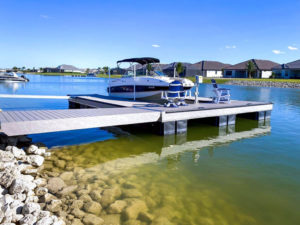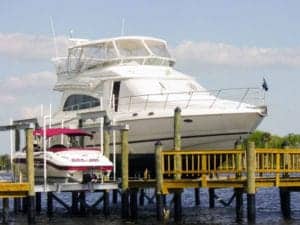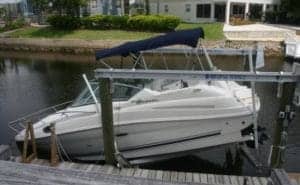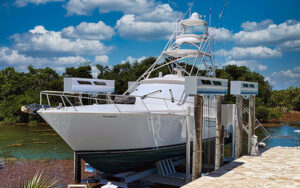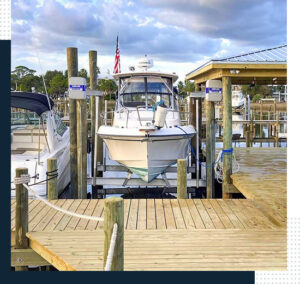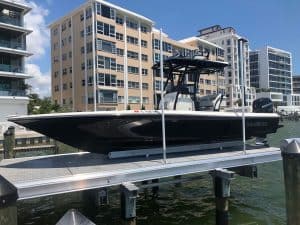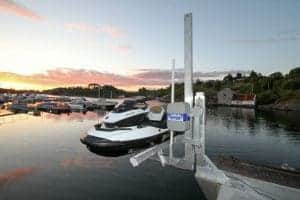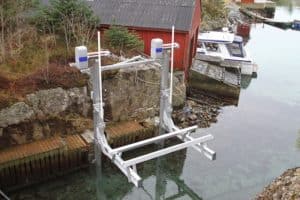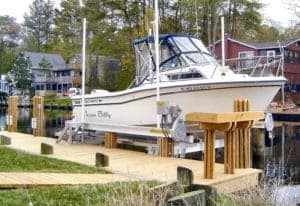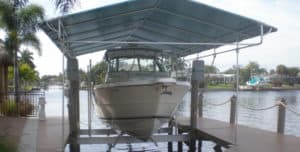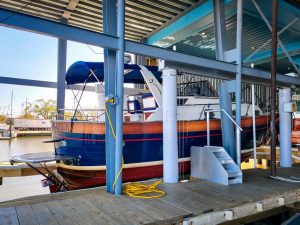The last thing you want to happen when operating a boat lift is seeing your boat sink or float away. Boat lifts are supposed to protect your watercraft by keeping it out of the water. However, not adhering to common sense and following manufacturer recommendations, can shorten the life of both your watercraft and lift. Keeping you and your boat safe should be your number one priority. Below are some tips to help you avoid mistakes when operating a boat lift.
Not positioning the boat properly
Balance is key when loading your boat onto the lift. Manufacturers rate lift capacity based on the assumption that the watercraft they are intended to lift will be more-or-less centered. When you are lifting the boat, be sure that the front and back are balanced, while the sides are even.
Avoid placing the boat too far front or back on the lift as the opposite end will become light. When waves wash up under the light end, they are much more likely to move and free the boat. The opposite end will also carry too much weight, which will cause additional strain on your boat lift cables. If these cables are worn out, they will eventually break.
Not following the weight capacity
Another mistake that you should avoid is exceeding the boat lift’s weight capacity. There is a good reason why manufacturers recommend following the required weight capacity. They do extensive testing to ensure the recommended weight capacities are accurate. Do not assume that a lift can handle a few extra pounds, as this assumption can become a recipe for disaster. Avoid a seller who insists on offering you a product that is rated even a pound less than the weight of your watercraft.
You should find a seller that will guide you into choosing the correct lift that can comfortably accommodate your boat’s weight. There are different types of lifts designed for each watercraft. When it comes to determining the weight, be sure to include the equipment, fuel, and other factors that can affect the weight of your watercraft. Although the listed poundage refers to your boat’s maximum weight, you should also take note of all the extras.
Not observing proper loading procedure
When you are loading a boat, be sure that you consider the maximum weight capacity of your boat lift, because any load that you add before lowering the boat in the water can affect your water craft’s weight. When loading the boat once it is on the water, you will also be able to identify the best weight distribution more easily.
While the general rule of thumb is to load your boat after it’s in the water, this may differ for you depending on your lift type and boat size. Refer to your lift’s instruction manual to be sure. Regardless, distributing any load weight evenly is always a good practice.
Not taking note of the lifting height
Avoid trying to raise a fully raised lift more. Continuing to crank the winch can damage some parts of your lift, including cables and pulleys. While there are winches that will shut off once the maximum height is reached, there are cases when some of its components will stop working, especially when the lift lacks routine maintenance. Be sure that you are aware of your lift’s maximum height.
For boat lifts that are not functioning correctly, it might be a sign that you need to purchase a new one. Be sure to choose models made from durable materials. They should also be designed for the type of watercraft you own.


